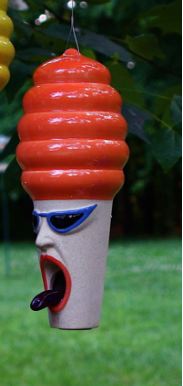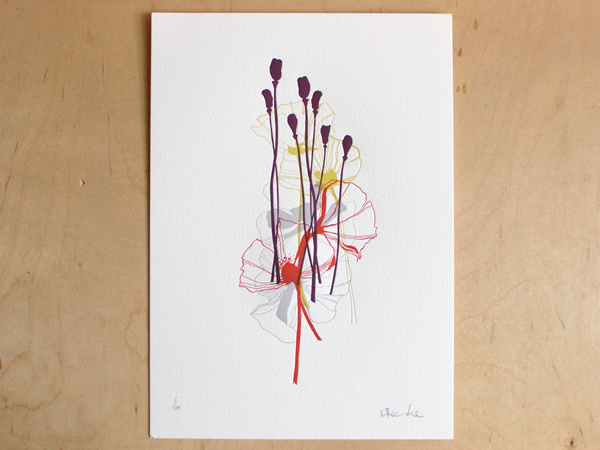-
No Halloween Treat for Bats
For Immediate Release, October 27, 2010
National Plan for Bat-killing Disease
Too Little, Too LateRICHMOND, Vt.— Four years into a wildlife disease epidemic that has already killed more than a million bats in the eastern United States, the federal government today finally released a national response plan for white-nose syndrome. But the U.S. Fish and Wildlife Service’s plan is still only in draft form and only provides a conceptual framework for responding to the disease. It lists no specific action items and makes no concrete recommendations for research and management of the fast-spreading malady that has hit nine bat species so far, including two on the endangered species list.
“It’s frightening to watch the government’s slow-motion response to what biologists call one of the worst wildlife declines in American history,” said Mollie Matteson, conservation advocate for the Center for Biological Diversity. “A year after it first released a draft version of its plan, we have yet another draft, and nothing that actually gives direction or provides resources to scientists in the lab or biologists in the field.”
White-nose syndrome is associated with a newly identified fungal species that grows on bats’ noses and wings and causes them to die of starvation during the winter. From its epicenter near Albany, NY, the disease has spread rapidly, with the fungus now found on bats in 14 states, from New Hampshire to Oklahoma, as well as the Canadian provinces of Quebec and Ontario. Bats play a vital role around the country in controlling moths, beetles and other insects.
“What would Halloween be without bats? Scarier still, what would America be without them?” Matteson said. “If we’re going to stem the spread of this deadly disease, we need the government to move quickly with a well-coordinated, well-funded response. In moving too slowly and failing to include concrete action, this plan keeps bats on the path to extinction, and we’ll all be poorer for it.”
The national plan has been long awaited by wildlife agencies and conservation groups as a way to push response to the disease into higher gear. Already, some bat populations in eastern states have declined by as much as 80 to 100 percent, and scientists fear that as the disease spreads westward, it will eliminate entire species of the insect-eating mammals. Insect populations may take off as a result, biologists say.
“The nightmare of this disease is only accelerating, but the federal government continues to waste time, as if it has decades to figure things out. The bats can’t tolerate more dramatic losses, and they can’t tolerate any more government foot-dragging,” said Matteson.
As an alternative to the Fish and Wildlife Service’s conceptual draft plan, the Center for Biological Diversity is urging the federal government take the following actions over the coming several months:
- Immediately declare white-nose syndrome a wildlife emergency
- Dedicate at least $10 million for white-nose syndrome research in next year’s Interior budget
- Develop a systematic plan for restricting access to all bat-occupied caves and mines on Bureau of Land Management lands and prohibit nonessential human access to all U.S. Forest Service caves in the Southwest by the end of the year
- Finalize the national response plan for the disease by mid-January
- Develop a National Park Service plan by mid-February to limit the disease’s spread
- Prohibit nonessential human access to all Forest Service caves in the Intermountain, Northern, Pacific Southwest and Pacific Northwest regions by late February
The Fish and Wildlife Service is accepting public comments on the draft plan for the next 60 days. After that, it will review the public response and finalize the plan. Specific measures for addressing the bat disease will be contained in a subsequent implementation plan, but there is no deadline for completion of the implementation plan, according to Fish and Wildlife Service officials.
Background
The Center filed a petition earlier this year to close all federally owned bat caves in the lower 48 states to protect bats from the possible human-caused spread of the white-nose fungus. Since then, the Forest Service has declared all bat caves in its Rocky Mountain Region (Kansas, Nebraska, Colorado and most of Wyoming and South Dakota) off-limits to recreational use; the Bureau of Land Management advised its state directors to take precautionary measures against the disease, including targeted cave closures; and the Fish and Wildlife Service administratively closed all bat caves and mines within the national wildlife refuge system. Last year, the Forest Service closed bat caves to recreational use in eastern and southern national forests.The Fish and Wildlife Service has yet to act on a Center petition, filed last January, to list two white-nose-affected bat species under the federal Endangered Species Act, despite clear evidence that bat numbers have declined dramatically in the East, where white-nose syndrome has been present the longest.
To learn more about bats and white-nose syndrome — and to see an animated map of the disease’s spread — go to
http://www.biologicaldiversity.org/campaigns/bat_crisis_white-nose_syndrome/index.html. -
A New Generation of wild bird feeders
Let’s face it…aesthetics is truly a matter of taste, and sure does vary with each individual. “One man’s trash…”
Bird Feeders are no exception to this rule. A new generation of wild bird feeders range from fun and funky, to antiqued and retro, even the simplistic style of Feng Shui. Most are hand crafted, bringing individual style and uniqueness to each piece. Materials that have been around forever are being used to transform the mundane into terrific art for the garden. Art to be admired, enjoyed, and to feed the birds!
Wild bird feeders for suet, seed, fruit, or just about anything you’d like to offer feathered friends, are crafted by those who have a passion for birds. The quality will surpass any wild bird feeder found in a “big-box store”.
The suet feeder shown here is anything but your traditional wire cage. Sustainable bamboo, glass and stoneware are used to create this beautiful, yet functional wild bird feeder. Weather-proof stoneware is also used in creating the oh-so-fun Hot Lips Hilda. She’s a seed feeder who’s guaranteed to entice many a wild bird.
Whether you’re considering a new feeder for the winter season, or maybe in search of a great gift, consider uniqueness, quality and just plain fun as factors. Wild bird feeders help feathered friends to thrive and flourish all year long.
-
New project marries art and social responsibility.
Working Proof Each week a new print is paired with a charity of the artist’s choice, to which The Working Proof donates 15% of the sale of each print, creating a product with not just aesthetic, but social value.
This week the Charity of choice is Show Hope. The interest of The Working Proof is to promote a variety of charities and expose them to new supporters through the appreciation of art and creativity. Each week a new print is released once a week on Tuesday’s at 1:30 pm. EST.
October 26, 2010 print release:
Autumn Poppy, by Natalie Tweedie. 15% of each print sale will be donated to Show Hope. $60.About the print (in the artist’s words):
This is the first letterpress print that I have produced of my line drawings. Letterpress suits my line work so well, and I love the textural qualities that the medium provides to my artwork. I worked with a great letterpress company in the UK called Blush°° Publishing to produce this print. I chose colours that remind me of my favourite season, Autumn…This is a four-color letterpress print on 300gsm Somerset Rough 100% cotton paper. Each print was signed and numbered by the artist.
I chose to pair my print with Show Hope. We are so lucky to have our daughter Astrid in our lives. She brings us so much joy that it seemed logical to select Show Hope as my charity.



